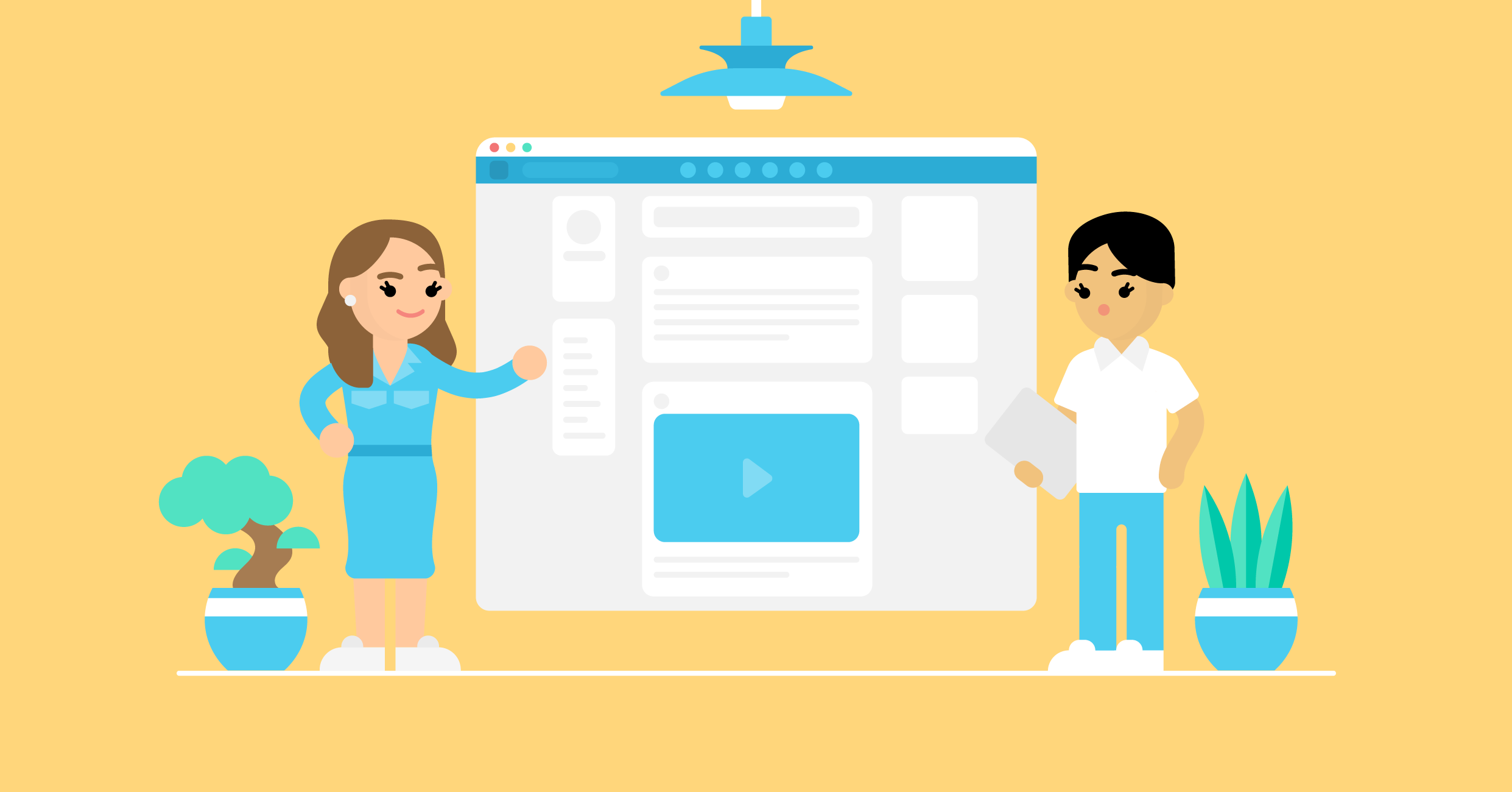LinkedIn is still the hottest place for job-search in 2023:
- Recruiters and hiring managers come to YOU instead of vice versa. You can sit back and just wait for all the job offers to pour in without lifting a finger, saving you A LOT of time and effort
- You get A TON of offers, LinkedIn is full of recruiters spending their entire day on the platform looking for candidates just like you
- The job offers you’re getting are always relevant to your experience and preferences
If you personally haven’t been contacted by potential employers, though, you might be wondering what’s wrong…
Well, that’s because you haven’t properly optimized your LinkedIn profile.
Want to know how?
Read on & follow our essential tips to turning your LinkedIn profile into a lean, mean, job-offer generating machine!
21+ Essential LinkedIn Profile Tips
#1 Fill Out Your Profile Thoroughly
Ok, there’s a reason we’re putting this tip at number one - it is essential that you thoroughly fill out your LinkedIn profile.
Why?
Because the most filled-out profiles on LinkedIn come up first in a recruiter’s search.
You may be the country’s leading professional in your field, but you might never be approached for it, only because your profile wasn’t thoroughly filled out. While that is not the ONLY factor that affects your place in hiring managers’ search, it is perhaps the most important one.
So make sure to check out all the profile sections LinkedIn lets you include and add and fill in as many of them as you can. And no worries, we will now walk you through how exactly to do that for each essential section.
#2 Make a Custom Profile URL
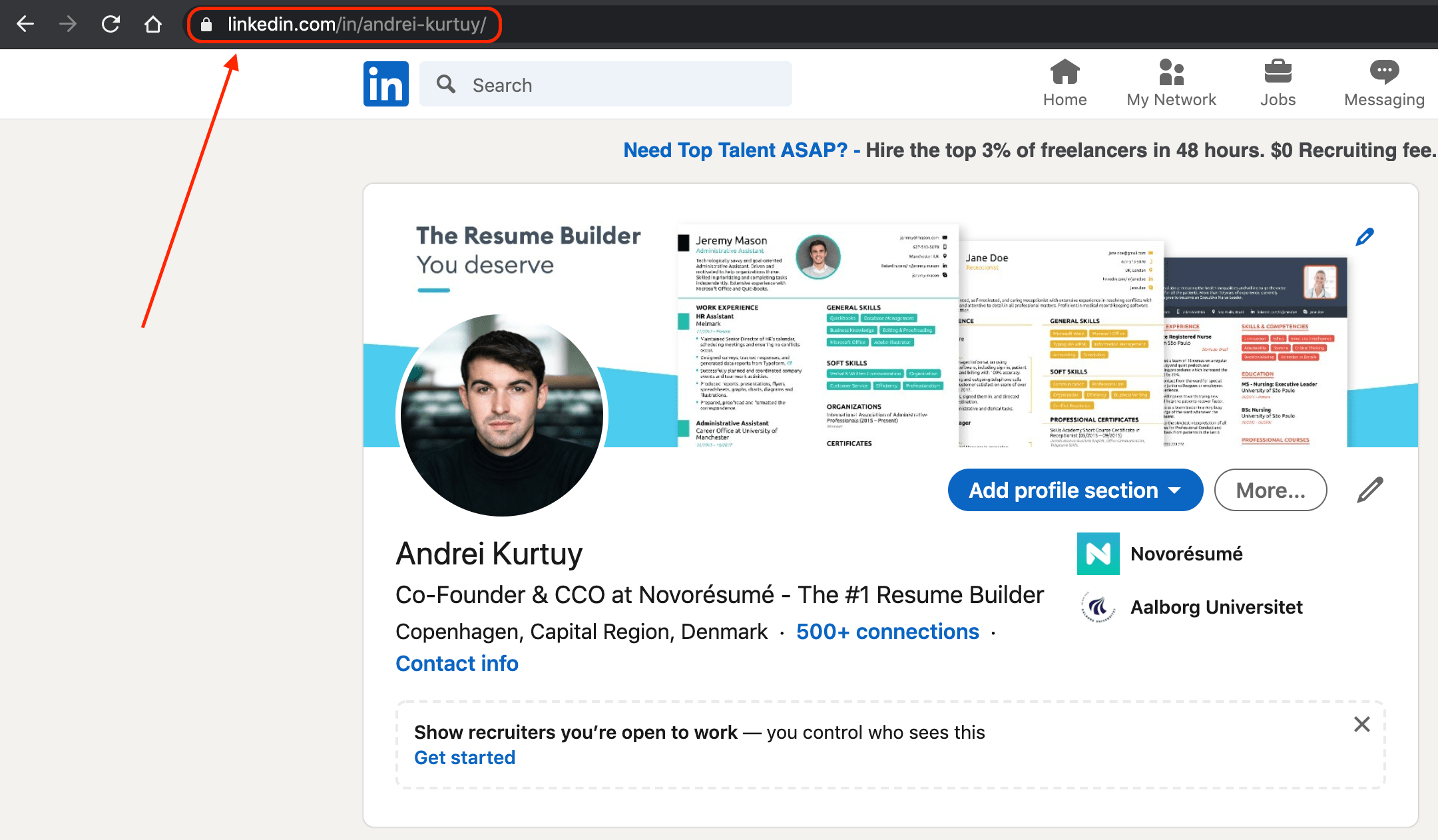
When you first create your LinkedIn profile you get an automatically generated URL - a pretty clunky one with a string of random numbers.
Having a more professional, clean, name-only URL is much easier to find, read, and share.
To change your URL, do this:
- Go to your profile
- At the top right of your profile page click “Edit public profile & URL”
- Again at the top right of the page now click the edit pen image button
- Fill in “[First Name] + [Last Name]”, like in the example above
#3 Pick the Right Profile Photo
First of all, yes, it’s important to have one. Members with a profile photo get up to 21 times more views!
What’s the right profile photo? The key here is: Aim for professional, but friendly.
You don’t want to come off as a stock photo for “office person smiling,” but at the same time, it shouldn't be something super casual (like your profile photo on Facebook).
Here are some of our tips on how to get your profile picture right:
- You don’t have to be wearing your best suit, but don’t just be sporting your favorite worn-out tee either. Check out what other people in your profession are wearing and go for something similar
- Make sure you look neat and clean
- Go for a friendly look, not too stern, not too goofy
- A profile pic accentuates your face. So, make it a close-up, not a whole-body pic
- Your profile pic has to be recent, don’t rely on that one photo from high school, no matter how good you look in it
- Quality is key, low resolution pics are a no-go
- Want to stand out? You can. If you have a high-quality photo of you doing something unique, like an interesting hobby or other professional interest, go for it! It will attract positive attention, as long as it’s not something too strange. Remember that LinkedIn is a professional platform!
On a final note, If possible, it’s best to get a professional headshot taken and use that. For example:

#4 Get Your Headline Right
Your headline is super important since it’s the first thing recruiters see when looking at your profile.
It should convey who you are and what you’re about in a short, clear, and concise way.
Having the right headline ensures you get found by recruiters for the right, relevant job, since a lot of them only search by title.
Including profession-specific skills and titles is also ok, as long as they’re relevant and not too long.
- Scrum Master, CSM
- Project Manager, PMP
- Coding Ninja
- Marketing Samurai
- Developer Unicorn
Make sure your title contains a keyword(s) that can be used to easily find you and pinpoint exactly what you do. If you’re a developer and work mostly with Java, it’s best to put “Java Developer” as your title, instead of “Software Engineer”.
At the same time, avoid the less descriptive titles as much as possible.
#5 Create a Summary That Stands Out
Your LinkedIn summary is the first thing a recruiter reads after your headline, so it’s super important to get it right.
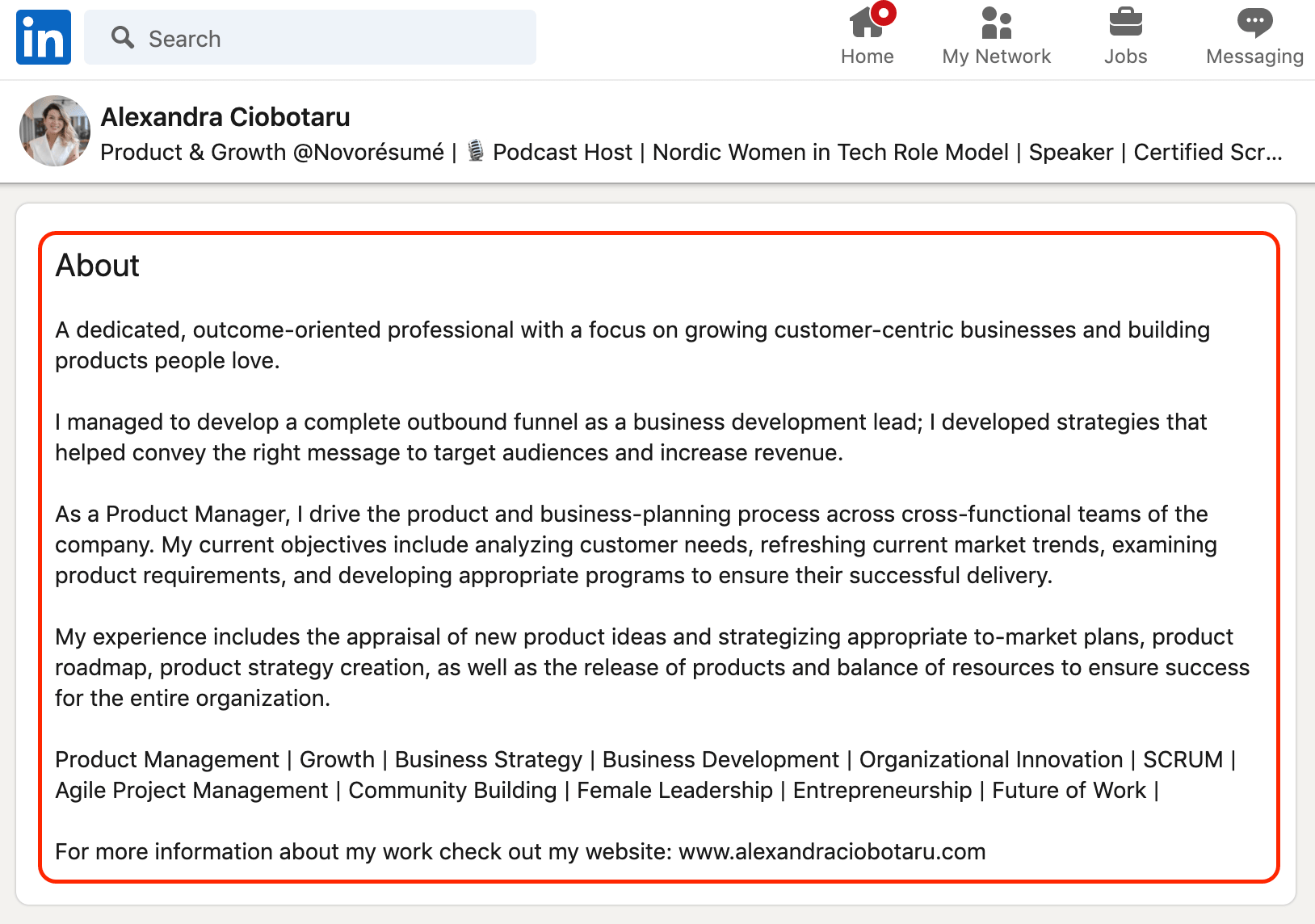
See, recruiters don’t have the time to read your entire profile from top to bottom - they read your headline, then summary, and quickly decide if you’re relevant for the position they’re hiring for or not.
So, it’s important to get your LinkedIn summary right.
A good LinkedIn summary section includes the following info:
- Your years of experience in your current field
- A list of your most relevant skills. This usually includes hard skills, tools you’ve used, programming frameworks, etc.
- Your current job title
- What you’ve excelled at, any relevant accomplishments
- What you’re passionate about
- What kind of role you’re looking for (if you’re openly looking for a new job, of course)
Or, to turn this into an example:
I’m a Level 2 Customer Service Representative with 5 years of experience in the field, including chat, e-mail, and phone tech support. I’ve worked with plenty of CRM systems, most familiar with Drift and Intercom.
I’ve handled up to 200 different customer calls per day and I’ve been named “Employee of the month” twice:
- Once for being fastest and most efficient with resolving tickets.
- And second time due to having the highest customer rating.
Now, let’s look at the DO’s and DON'Ts of the LinkedIn profile summary section:
- Make it between 3 and 5 paragraphs long
- Use clear, concise sentences
- Separate the information in structured paragraphs
- Use bullet points when relevant
- Managed people? Add that here too - how many, in what context
- Be specific, use numbers - number of people you managed / ballpark of the budget you handled, etc.
- Make it too short - one sentence won’t do
- Make it too long - don’t see the summary as an opportunity to tell your entire life story. The recruiters won’t take the time to read it and your main point will be missed
- Copy and paste a generic summary you’ve seen somewhere, even if it sounds good. You want to stand out, not to fit in!
#6 Optimize Your Experience Section
Arguably your experience section is the most important part of your LinkedIn profile. After all, your experience is the #1 factor on whether you’re qualified for any given job or not.
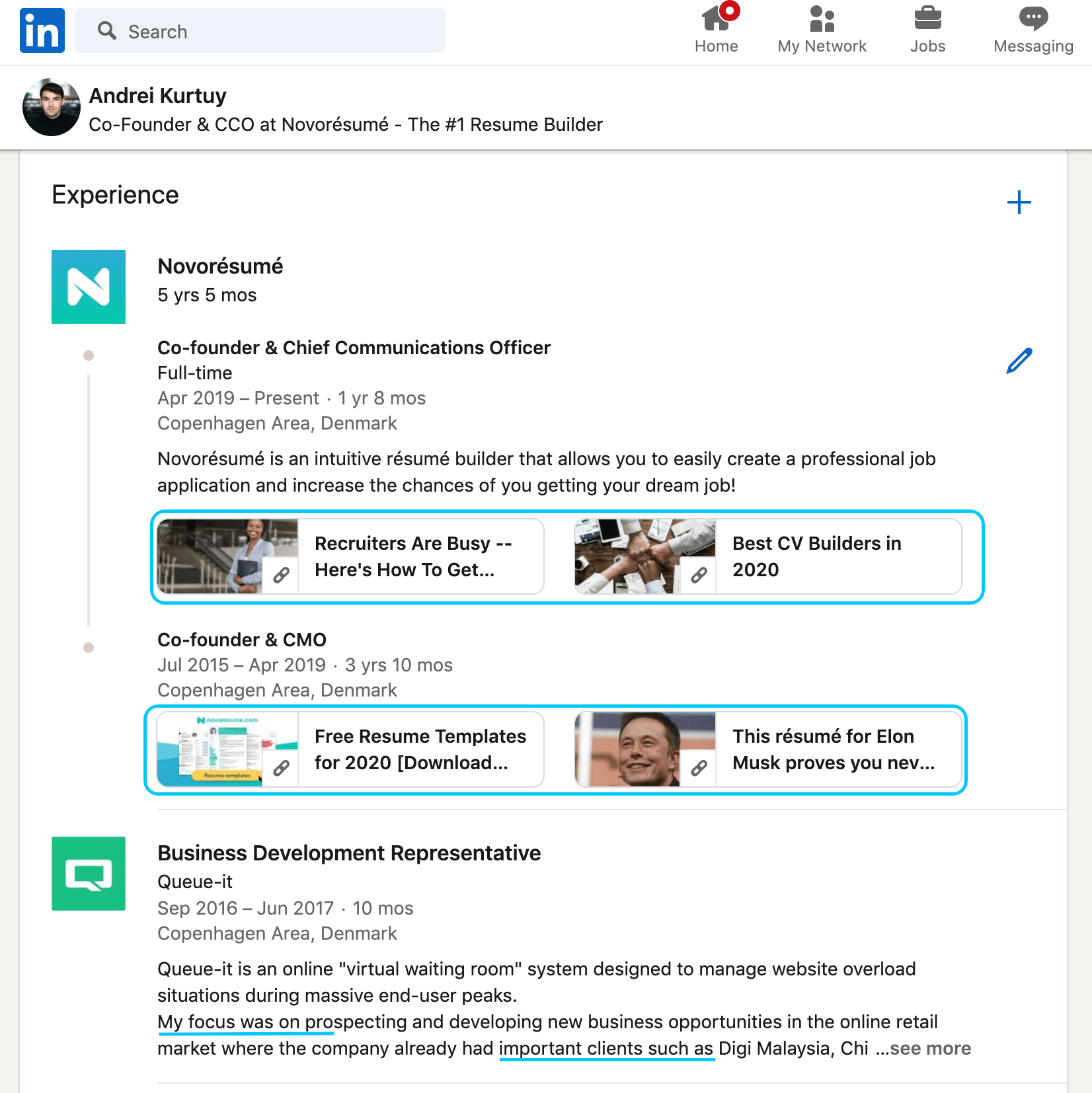
Here are some of our tips on how to make your work experience stand out…
- For each position, include the responsibilities and achievements
- When possible, use Laszlo Bock’s formula for describing your achievements: Accomplished [x] as measured by [y] by doing [z].
- Skip out all the irrelevant work experience. If you’re a sales professional with 10+ years of experience, you really don’t need to include that one time you worked as a cashier in K-mart 15 years ago
#7 Keywords, Keywords, Keywords
Want your profile to be discovered by recruiters on LinkedIn?
You need to include the right keywords all of your profile - headline, summary, work experience, and the skills section.
This tells the LinkedIn algorithm that your profile is VERY relevant to the specific keywords used.
For example, if you do digital marketing, you could add the following keywords all around your profile:
- Content Marketing
- Facebook Ads
- PPC
- Advertising
- Google Ads
So, whenever a recruiter looks up “Google Ads Specialist,” your profile will STILL pop up if your job title is unrelated (e.g. “Digital Marketing Specialist”).
Not sure which keywords to add?
The best advice we can give you is to find a job ad that comes closest to the job you want and “scan” it for keywords.
What stands out? What is being repeated in the list of responsibilities and desired experience and knowledge? Go off of that.
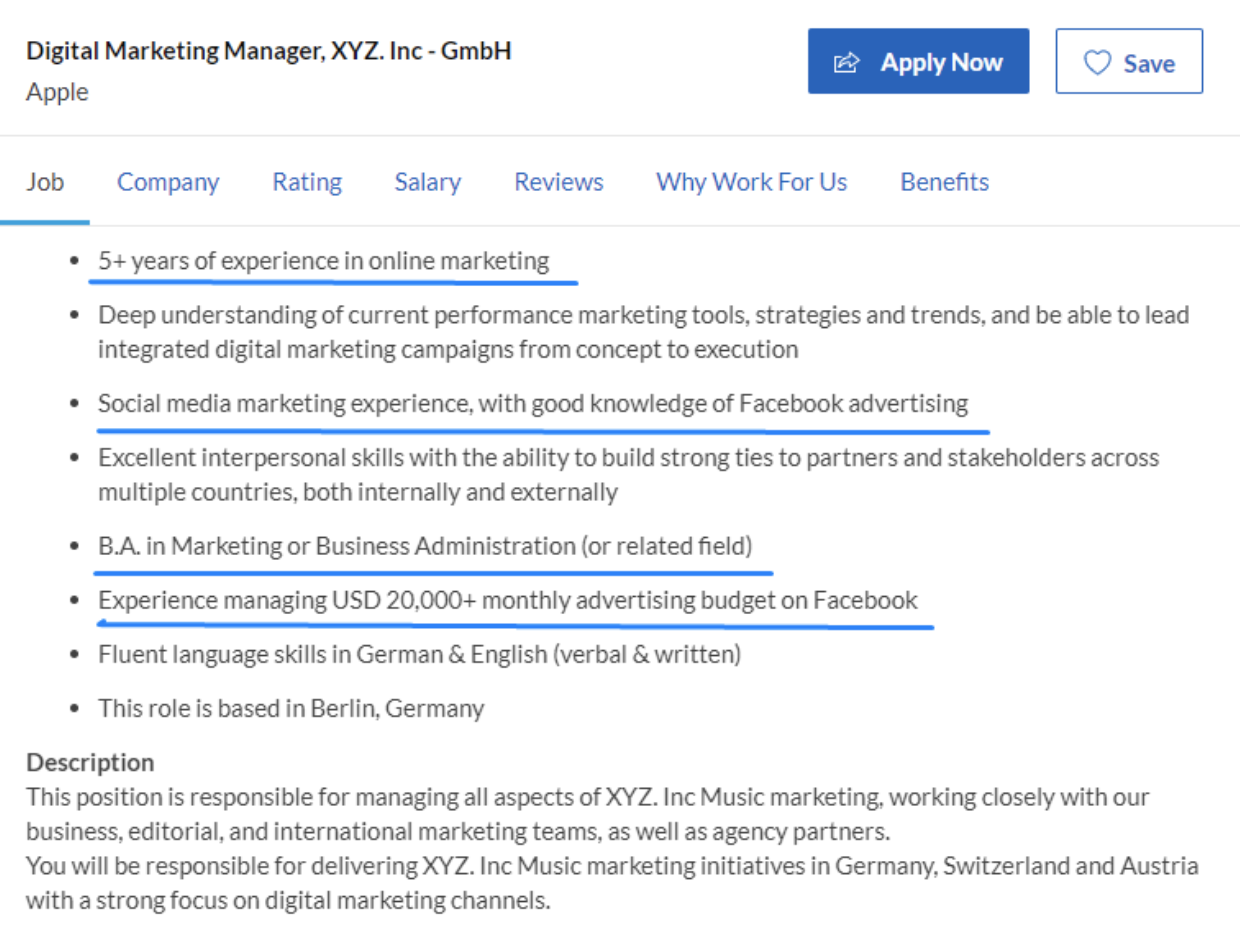
- Try not to overdo it on the keywords, though. Mentioning each keyword 1-3 times is usually more than enough!
#8 Show Off Your Work
Have any cool projects you’ve worked on? Organized any important events? Written articles or books?
Awesome! Show them off on your LinkedIn profile.
These are especially helpful if you don’t have a lot of work experience. E.g. if you’re a recent Software Engineering graduate, you can mention your GitHub profile with the projects you’ve worked on in school.
The way to show off your projects on LinkedIn is to add a “Featured” section.
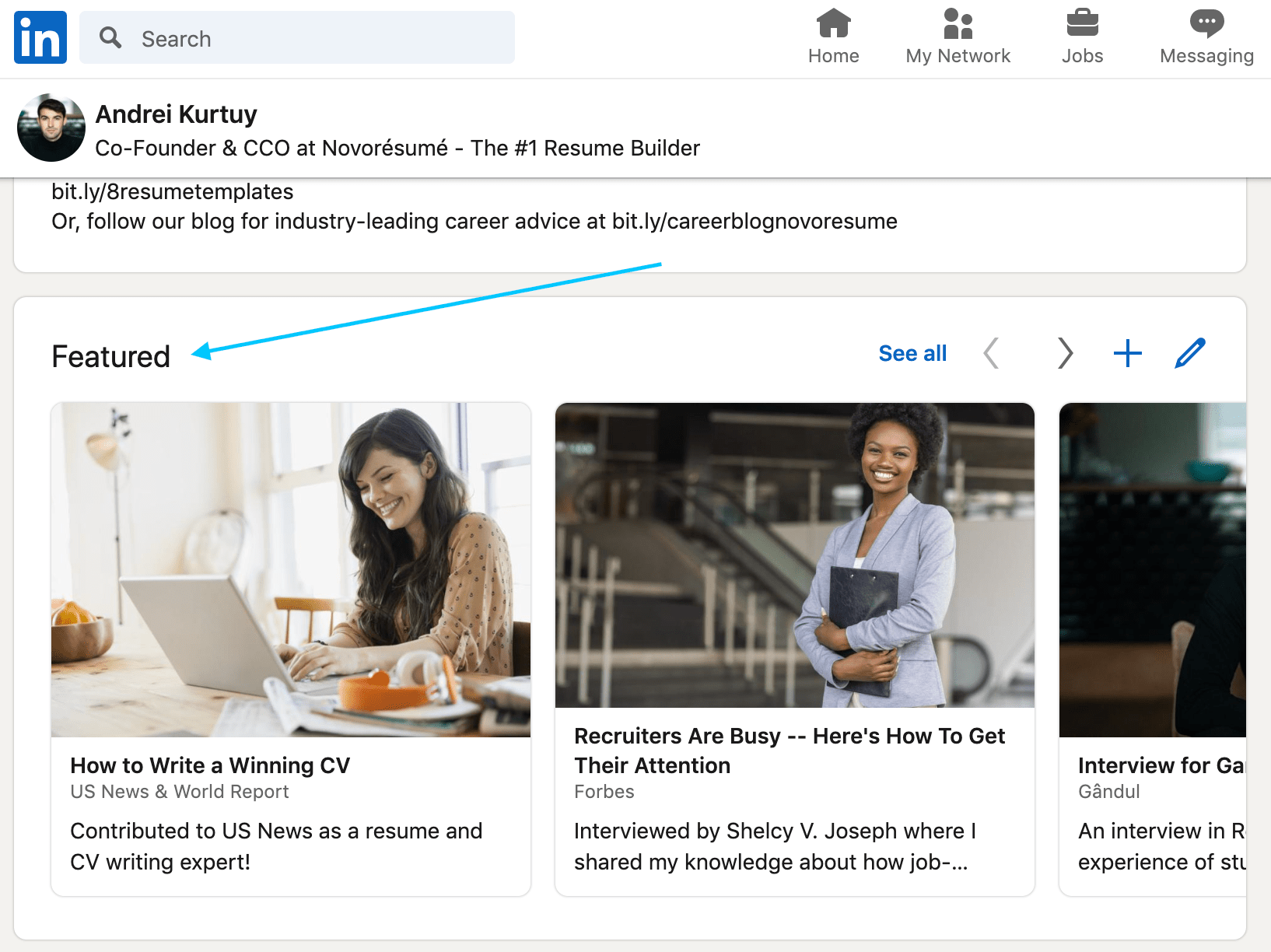
To do this, go to your profile ➜ Click the “Add profile section” button ➜ Select “Featured” ➜ Pick what you want to add.
Another way to showcase your work is by adding multimedia to your experience entries - the same rule applies, they pop out, look good and stand out for the recruiters.
#9 Include Most if Not All of Your Licenses and Certifications
If you have certifications that are highly relevant for your role (or the desired position), you should include them on your LinkedIn profile.
To do this, go to your profile, hit “add profile section,” and pick “licenses and certifications.”
Have a language certificate or two (or more)? You can include them too!
Whether you use the language in your job or not, knowing foreign languages is always a plus.
#10 Fill in that Skills Section (And Get Some Endorsements)
The “Skills and Endorsements” section is also an important part of your LinkedIn profile puzzle.
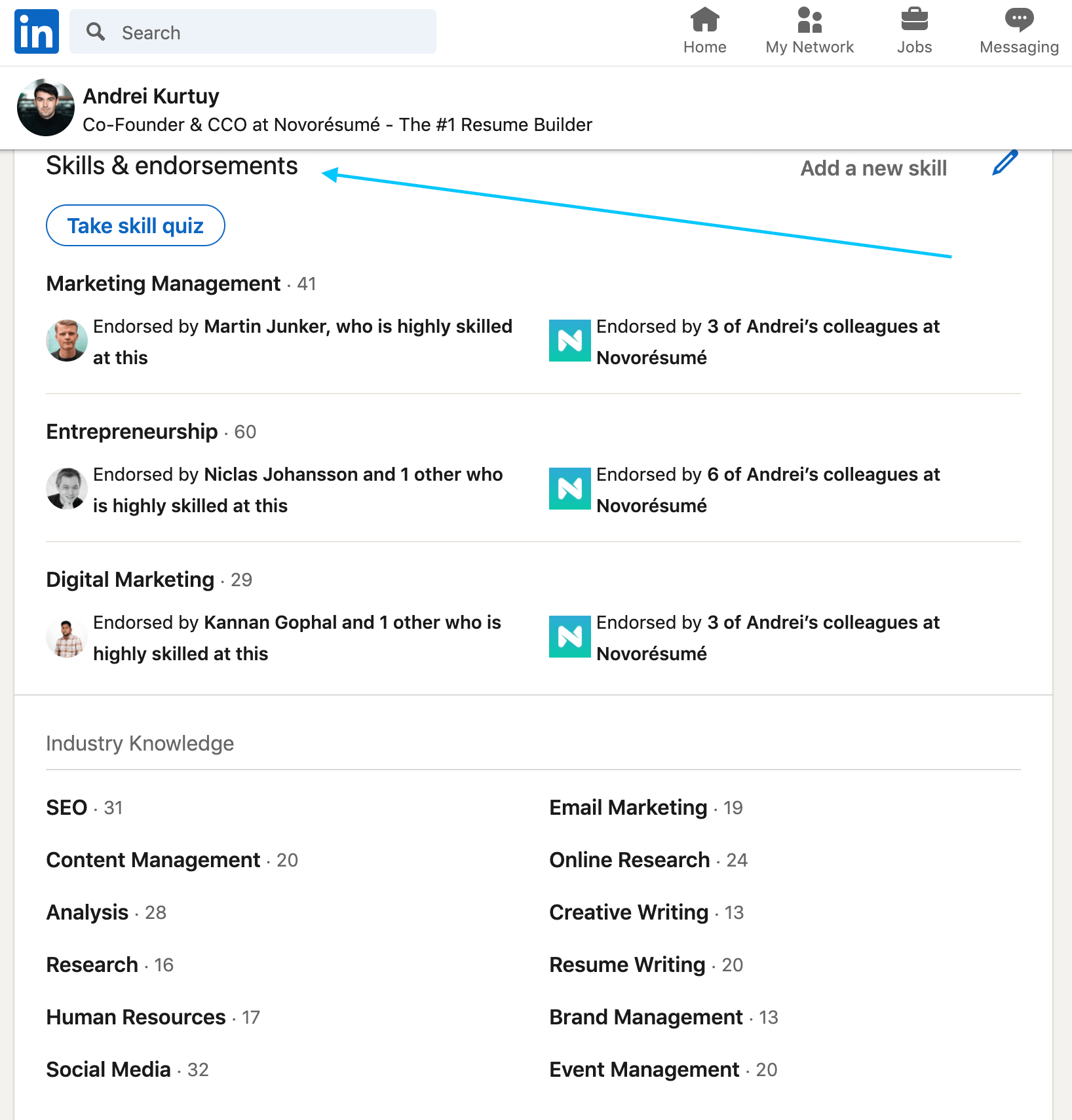
Feel free to go wild with this one - LinkedIn gives you a limit of 50 skills you can add, and you know what? Add all 50!
Add every skill you possess, as well as it’s synonyms (E.g. Java, Java Programming, Java Development) or derivatives (E.g. Digital Marketing, Content Creation, Online Advertising).
In case you have more than 50 skills to list, make sure to stick to the most relevant ones.
Can’t think of 50? That’s fine, just add the ones you can think of, and LinkedIn will recommend similar ones.
Once you’re done with that, It’s time to get some endorsements.
Contact your coworkers & ex-colleagues who are on LinkedIn and ask them to endorse your skills. To return the favor, you can offer to also endorse them in return.
Why is this important? Because endorsements are social proof. While they’re NOT what the recruiter is going to go off on whether they should hire you or not, they’re going to make you a more “presentable” candidate.
Skip the soft skills, and focus on the hard skills.
Generic soft skill statements like “good listener”, “team player”, “critical thinking skills”, etc. have lost all meaning to a recruiter. They’re extremely overused, and they pretty much apply to most people to a decent extent anyway.
At this stage, recruiters aren’t looking for your soft skills - they evaluate those on an interview. They simply need to know what your hard skills are, and whether they’re relevant for the role they’re sourcing for.
#11 Get Some Recommendations
Think of all the people in your professional crowd you’re close to and have had positive interactions with. Contact them and ask them for a recommendation on your LinkedIn profile.
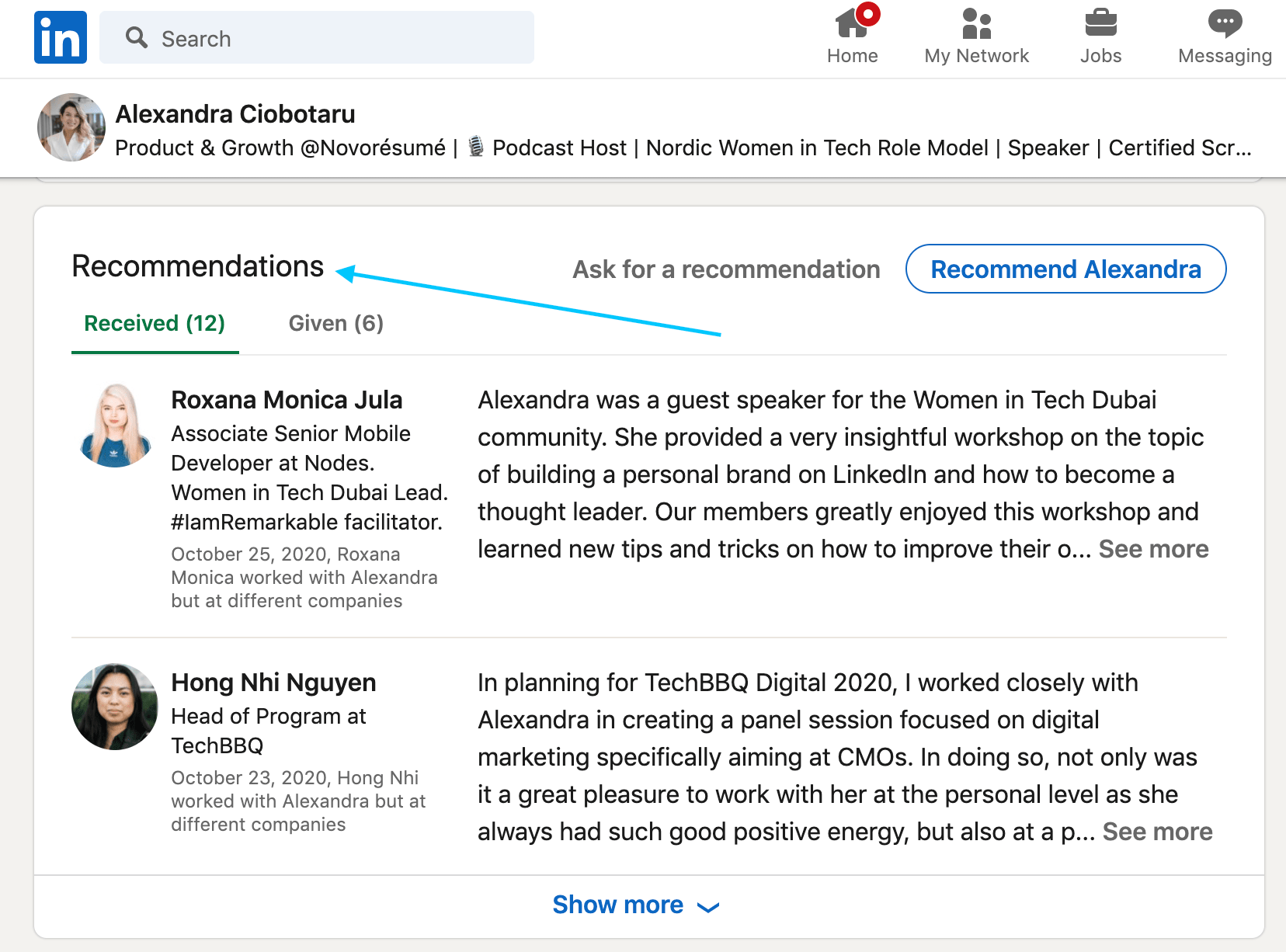
Recommendations add social proof to your profile - they show that your coworkers and peers think highly of your skills.
The best, most meaningful recommendations you can get are from your direct management. Had a boss that was fond of you? Ask them to help out.
The second best are from clients / customers you’ve worked with. Someone, who was very happy with and appreciative of the work you did for them.
And thirdly, you can also ask horizontally connected coworkers to leave you a recommendation too, best if you worked directly together in a team - their opinion will hold more value due to them having spent the most time with you.
#12 Hack the Accomplishments Section
LinkedIn gives you a pretty long list of possible accomplishments you can add to your profile and we recommend making use of that. Anything you’ve done that you’re proud of and can show off - awards, languages learned, projects, publications, etc - add it!
For the accomplishments part, we recommend giving as much information about the projects you’ve worked on as possible. Include what the project was about, what you did, and what kind of results you achieved.
As for the languages part, just add the languages you know with the knowledge level (i.e. Beginner, Intermediate, Fluent, etc.), and you’re good to go.
Mentioning languages on LinkedIn can always come in handy, as there are a ton of multilingual job opportunities out there for most fields.
#13 Add Some Interests
Yes, LinkedIn has an interests section.
And no - this is NOT what’s going to land you your next job.
But what it WILL help you with is showing some personality on your profile.
Let’s say, for example, you’re a senior hardware engineer who’s really interested in working for a space travel company. You could include Nasa, SpaceX, Blue Ocean, and other space companies in your interests.
So, if a recruiter from such a company is looking at your profile, they’re going to be more inclined to contact you.
To add an interest - just look up whatever company, group or school you’re interested in, click on their LinkedIn page and click the blue Follow button under their name, as such:
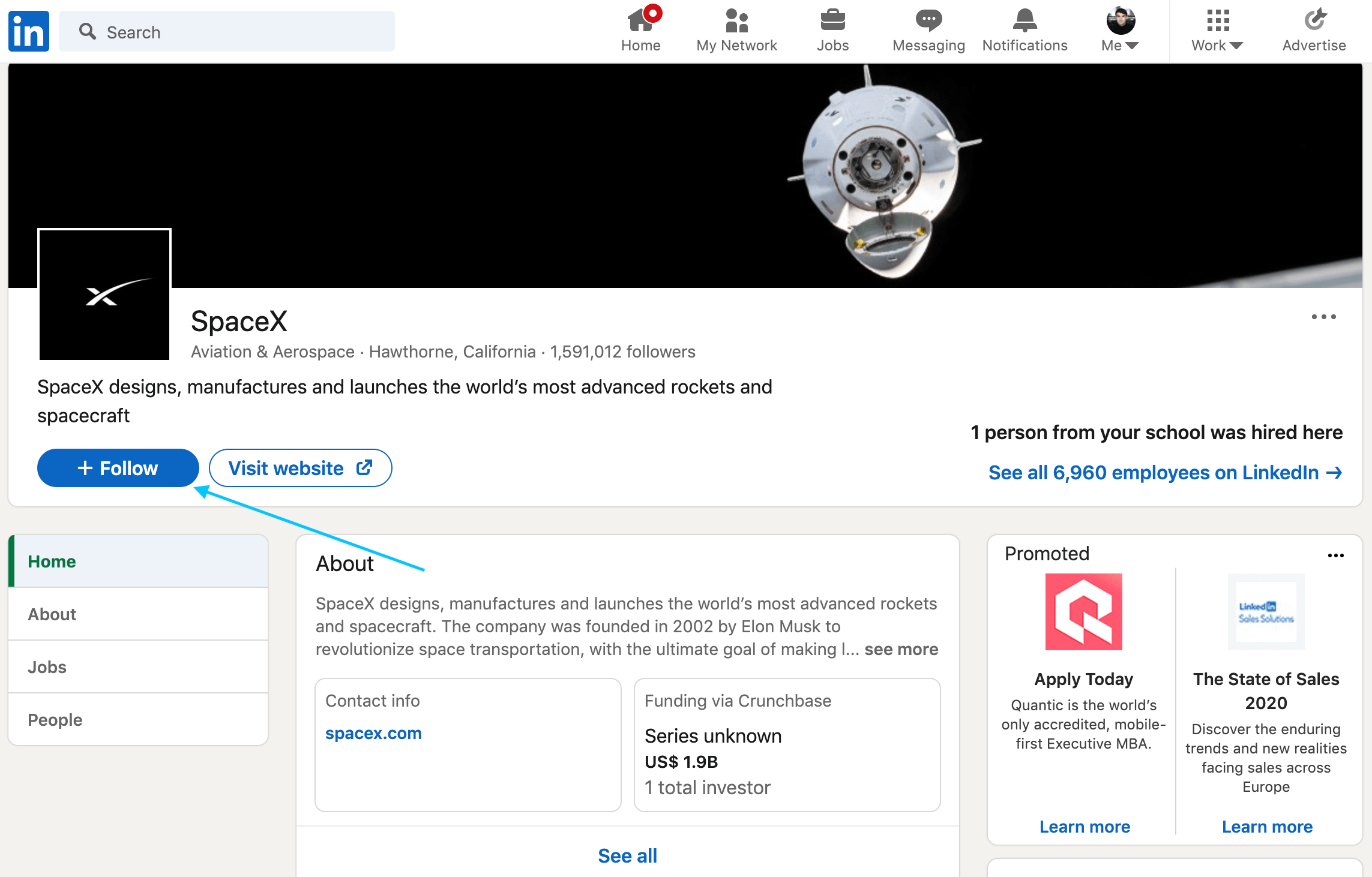
#14 Disclose That You’re Open to New Opportunities
LinkedIn lets you show whether you’re open to new opportunities or not on your profile.
This helps recruiters understand whether you’re open to being approached or not.
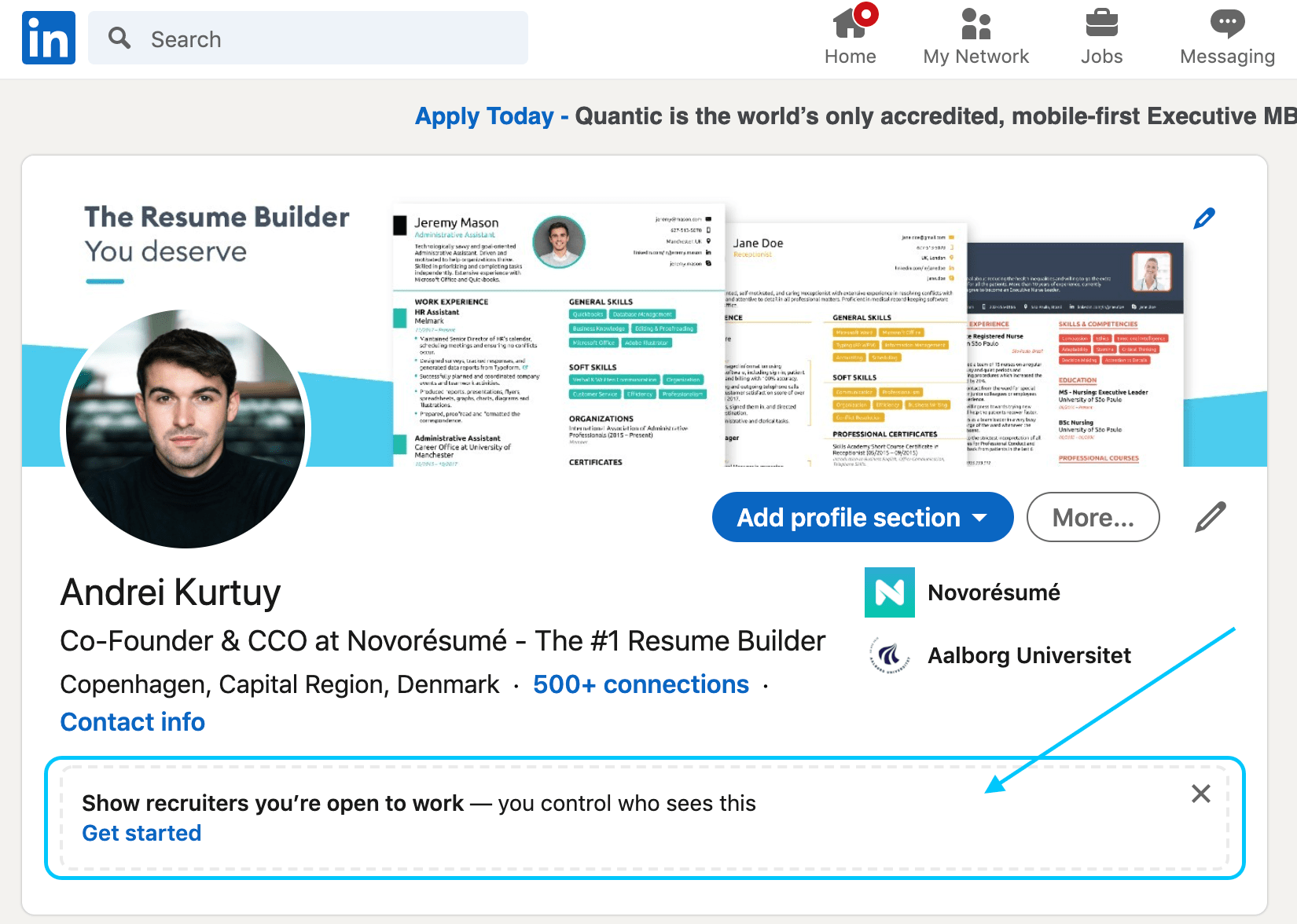
Simply hit “Get Started” and fill in the info.
And don’t worry, people in your company (i.e. your boss) WON’T be able to see your status, just make sure that you have “Share with recruiters only” on.
#15 Write in The First Person
For some reason, some people on LinkedIn use the third person when writing about themselves on their profiles. And we’re not talking famous people, who have a page and someone wrote it for them, we’re talking regular people with regular jobs.
Things like:
“Josh is a grade-A accountant with over 15 years of experience in…”
That’s a big no.
Stick to the first person. Your LinkedIn profile is supposed to sound personal and sincere. The third person expression sounds more “fake” and pompous.
#16 Use Numbers & Data To Emphasize Accomplishments
Compare these two work experience entries:
“I did sales at Company X”
VS.
“I closed over $200,000 in sales deals at Company X in 2019”
Which one do you think is more compelling for the recruiter?
Exactly!
Throughout your profile, use numbers and data to emphasize your achievements. This will allow you to seriously stand out from the rest of the candidates.
#17 Avoid Typos
This should go without saying, but it’s important enough to mention. Your LinkedIn profile is your “business face” - you can’t get away with making basic spelling mistakes.
So, we recommend double-checking, even triple-checking the text on your LinkedIn profile. Not the best at editing? Try using Grammarly - a spell-checking software that catches 99% of the usual typos or mistakes.
You can also ask a coworker or a friend to proofread it for you if you want to be 100% safe.
#18 Be Relevant
Now, we’ve mentioned this all across this article, but we figure it deserves its own entry.
Your LinkedIn profile should be 100% relevant for the positions you want to work, as well as your career.
- DON’T go on and on about your experience and skills as if it’s a novel
- DON’T add every little thing you know or have worked with, especially if it’s not in any way relevant to your current and future job aspirations
- DON’T fill your profile with buzzwords, things like “critical thinker, good communication skills, team-player, etc.”. Recruiters are desensitized to those anyway
- DON’T add soft skills - they’re only taking up space, and recruiters evaluate those during interviews anyway
When filling in your different LinkedIn profile sections, always take a second to stop and think “is what I’m writing relevant to the job I want to get”.
#19 Be Active
When on a job hunt on LinkedIn, it’s also important to be active on the platform. I.e. post professional content you enjoy, as well as engage with other people’s posts.
This lets you stand apart from other potential candidates, and makes it more likely for the recruiters to notice you.
So, whenever a job opening for your role pops up, there’s a good chance you’ll be the first candidate on the recruiter’s radar!
This doesn’t mean you need to spend all your day on LinkedIn, though. Just dedicate 10-20 minutes to it per day max, and you’re good to go!
#20 Network, Network, Network
At its core, LinkedIn is a professional networking platform.
Meaning, it’s OK to add people who you haven’t met in real life - that’s what the platform is for!
Feel free to add recruiters, HR specialists, and hiring managers in companies you want to work for to your network.
This way, you’ll always be updated with open positions that they might have, and you’ll pop up on top of all other candidates when these recruiters do search for someone with your skill-set.
Keep in mind though, when adding connections on LinkedIn, it’s more courteous to send a connection request with a short message. Here’s an example of what a good connection message looks like:
“Hello [First Name],
I’m currently on the lookout for a new job and am expanding my network with professionals in the HR field, such as yourself. Will be happy to discuss any opportunities at any point.
Best regards,
[Your Name]”
Want to be more specific, but the 300 character restriction for a connection message doesn’t allow for it? After they accept your connection request, you can send them an intro message such as:
“Hello, [First Name],
I stumbled across your profile and saw you’re recruiting for Company X. I’m a big fan of their work and currently open to new job opportunities as a [Your Role].
If you currently have any relevant openings, I’ll be happy to discuss this further. If not, I’d still like to thank you for connecting and will be happy to be considered for any future opportunities.
Best regards,
[Your Name]”
#21 Use The Find Nearby Feature
LinkedIn has a very interesting feature for Mobile that not everyone knows about - “Find Nearby.”
What it does is, when you turn it on, the app shows you profiles of people who are physically nearby (within your Bluetooth range) and who have also turned the feature on.
As a given, you also show up as active to nearby users.
This can be extremely helpful if you’re going to physical networking events, conferences, or professional meetups as a means of meeting HRs in specific companies.
Once you know who’s at the conference or meetup, you can be on the lookout for them, and say hi whenever you get the chance!
To turn on the Find Nearby feature, you need to:
- Activate Bluetooth on your mobile device.
- Tap My Network icon ➜ Connect button ➜ Find nearby button.
Conclusion
Alright, you’ve been through the list.
At this point, you should know everything you need to know to create a killer LinkedIn profile.
Now, all you have to do is sit back, and wait for those job offers to start rolling in!
Interested in more job-search advice for 2023?
Here are some of our best guides:
